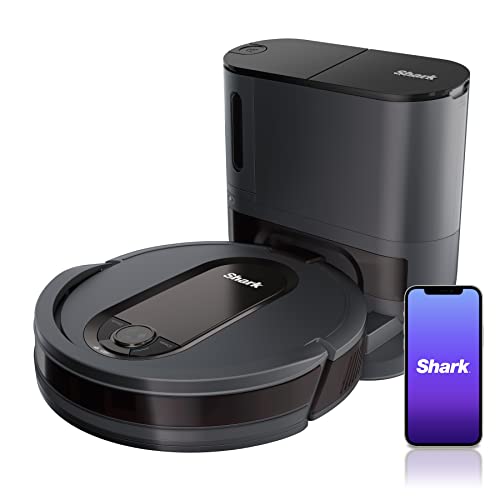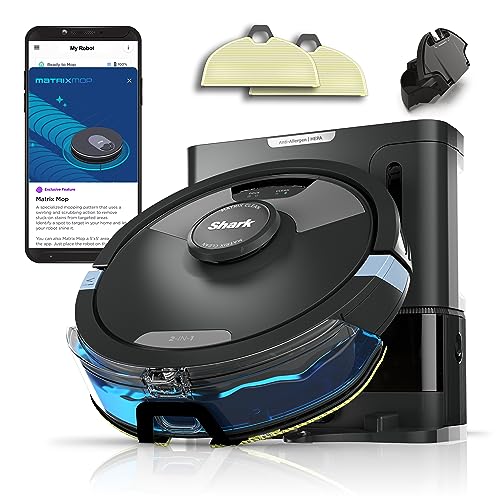See What Bagless Self-Navigating Vacuums Tricks The Celebs Are Using
페이지 정보

본문
 bagless robot vacuums Self-Navigating Vacuums
bagless robot vacuums Self-Navigating VacuumsBagless self-navigating vacuums have the ability to hold up to 60 days of dust. This means you do not have to buy and dispose of replacement dustbags.
When the robot vacuum and mop bagless docks at its base, the debris is transferred to the dust bin. This is a loud process that can be startling for pet owners or other people in the vicinity.
Visual Simultaneous Localization and Mapping (VSLAM)
SLAM is an advanced technology that has been the subject of extensive research for years. However as sensor prices decrease and processor power increases, the technology becomes more accessible. One of the most prominent applications of SLAM is in bagless robot vacuum mop vacuums that make use of many sensors to navigate and create maps of their environment. These gentle circular cleaners are among the most ubiquitous robots in the average home in the present, and with good reason: they're also among the most effective.
SLAM is a system that detects landmarks and determining the robot's location in relation to them. Then, it combines these data into the form of a 3D map of the surrounding which the robot could then follow to move from one place to the next. The process is iterative and the robot is adjusting its positioning estimates and mapping constantly as it collects more sensor data.
The robot then uses this model to determine its position in space and to determine the boundaries of the space. The process is very like how your brain navigates unfamiliar terrain, relying on the presence of landmarks to help make sense of the landscape.
Although this method is efficient, it does have its limitations. Visual SLAM systems are able to see only a limited amount of the world. This reduces the accuracy of their mapping. Visual SLAM also requires high computing power to function in real-time.
Fortunately, a variety of ways to use visual SLAM are available, each with their own pros and pros and. One of the most popular techniques for example, is known as FootSLAM (Focussed Simultaneous Localization and Mapping) which makes use of multiple cameras to boost the system's performance by combining tracking of features along with inertial odometry and other measurements. This technique requires more powerful sensors than simple visual SLAM and can be challenging in situations that are dynamic.
LiDAR SLAM, also known as Light Detection And Ranging (Light Detection And Ranging), is another important method of visual SLAM. It makes use of a laser to track the geometry and objects in an environment. This method is particularly useful in areas that are cluttered and where visual cues are obscured. It is the preferred method of navigation for autonomous robots in industrial settings, such as factories and warehouses, as well as in drones and self-driving cars.
LiDAR
When you are looking for a new robot vacuum, one of the biggest factors to consider is how efficient its navigation is. Without high-quality navigation systems, a lot of robots will struggle to navigate around the home. This can be a problem especially in large spaces or a lot of furniture that needs to be moved out of the way for cleaning.
While there are several different technologies that can help improve the navigation of robot vacuum cleaners, LiDAR has been proven to be particularly effective. The technology was developed in the aerospace industry. It utilizes a laser scanner to scan a space and create 3D models of its surroundings. LiDAR can then help the robot navigate by avoiding obstacles and preparing more efficient routes.
The main benefit of LiDAR is that it is extremely accurate at mapping as compared to other technologies. This can be a big advantage, as it means the robot is less likely to crash into objects and spend time. In addition, it can aid the robot in avoiding certain objects by setting no-go zones. You can create a no-go zone on an app when you, for instance, have a desk or a coffee table that has cables. This will prevent the robot from coming in contact with the cables.
Another benefit of LiDAR is the ability to detect walls' edges and corners. This is extremely helpful when using Edge Mode. It allows the robots to clean along the walls, which makes them more efficient. It is also useful for navigating stairs, as the robot will not fall over them or accidentally stepping over a threshold.
Gyroscopes are yet another feature that can aid in navigation. They can prevent the robot from bumping against objects and can create an uncomplicated map. Gyroscopes are typically cheaper than systems that rely on lasers, such as SLAM and still provide decent results.
Cameras are among the sensors that can be used to assist robot vacuums with navigation. Certain robot vacuums employ monocular vision to detect obstacles, while others utilize binocular vision. These allow the robot to identify objects and even see in the dark. The use of cameras on robot vacuums raises privacy and security concerns.
Inertial Measurement Units (IMU)
IMUs are sensors that measure magnetic fields, body frame accelerations, and angular rates. The raw data is filtered and reconstructed to create information about the position. This information is used to position tracking and stability control in bagless electric robots. The IMU sector is growing due to the use of these devices in virtual and augmented reality systems. The technology is also utilized in unmanned aerial vehicle (UAV) for navigation and stability. The UAV market is rapidly growing, and IMUs are crucial to their use in fighting fires, locating bombs, and carrying out ISR activities.
IMUs come in a variety of sizes and costs, according to their accuracy and other features. Typically, IMUs are made from microelectromechanical systems (MEMS) that are integrated with a microcontroller and a display. They are also designed to withstand extreme temperatures and vibrations. They can also be operated at high speeds and are immune to interference from the outside which makes them an essential tool for robotics systems and autonomous navigation systems.
There are two kinds of IMUs: the first group captures sensor signals raw and stores them in an electronic memory device like an mSD memory card or via wired or wireless connections to a computer. This kind of IMU is known as a datalogger. Xsens MTw IMU features five dual-axis satellite accelerometers and a central unit that records data at 32 Hz.
The second kind of IMU converts signals from sensors into processed data that can be transmitted via Bluetooth or through an electronic communication module to the PC. The data is then analysed by an algorithm that employs supervised learning to determine symptoms or activity. As compared to dataloggers and online classifiers require less memory space and enlarge the capabilities of IMUs by removing the need to send and store raw data.
IMUs are challenged by the effects of drift, which can cause them to lose their accuracy over time. IMUs should be calibrated on a regular basis to avoid this. Noise can also cause them to provide inaccurate data. Noise can be caused by electromagnetic disturbances, temperature changes or vibrations. To reduce the effects of these, IMUs are equipped with noise filters and other signal processing tools.
Microphone
Some robot vacuums feature microphones that allow users to control them remotely from your smartphone, connected home automation devices and smart assistants such as Alexa and the Google Assistant. The microphone is also used to record audio within your home, and some models can even function as an alarm camera.
The app can be used to create schedules, identify cleaning zones, and monitor the progress of the cleaning process. Some apps can also be used to create "no-go zones" around objects you do not want your robot to touch, and for more advanced features such as detecting and reporting on the presence of a dirty filter.
Modern robot vacuums come with the HEPA filter that removes pollen and dust. This is a great feature for those with allergies or respiratory issues. Many models come with remote control that allows you to set up cleaning schedules and control them. They are also capable of receiving firmware updates over the air.
The navigation systems in the new robot vacuums are very different from older models. Most cheaper models, like Eufy 11, use basic bump navigation, which takes a long while to cover your home and is not able to detect objects or avoid collisions. Some of the more expensive models come with advanced mapping and navigation technologies which allow for better coverage of rooms in a shorter period of time and manage things like switching from hard floors to carpet or navigating around chair legs or narrow spaces.
The best robotic vacuums combine sensors and lasers to create detailed maps of rooms, allowing them to efficiently clean them. Some models also have 360-degree cameras that can look around your home which allows them to identify and avoid obstacles in real time. This is particularly useful in homes with stairs, because the cameras will prevent them from accidentally climbing the stairs and falling down.
Researchers, including one from the University of Maryland Computer Scientist, have demonstrated that LiDAR sensors used in smart robotic vacuums are capable of recording audio in secret from your home, even though they weren't designed as microphones. The hackers used this system to detect audio signals reflected from reflective surfaces such as televisions and mirrors.

- 이전글20 Things You Must Be Educated About Double Glazing Door Lock Repairs 24.08.26
- 다음글7 Proven NBA Betting Free Online Bonus Code Techniques 24.08.26
댓글목록
등록된 댓글이 없습니다.